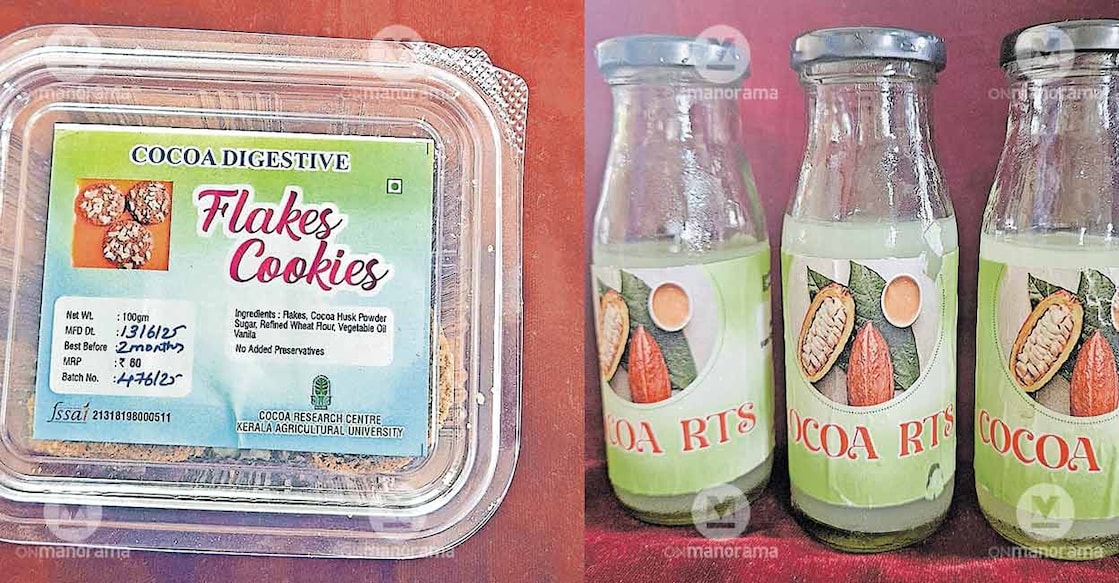Beyond chocolate: Agricultural University makes cookies, drinks, and more from cocoa 'waste'

Mail This Article
At the Cocoa Research Centre of Kerala Agricultural University in Mannuthy, chocolate isn’t the only story cocoa tells. The Centre has developed two innovative value-added products using what is typically discarded during chocolate production, namely the husk and pulp of the cocoa fruit.
The first innovation is a pair of healthy cookies made with oats and beaten rice, using cocoa husk as a key ingredient. The second is an antioxidant-rich, ready-to-serve energy drink extracted from the cocoa pulp.
Cocoa husk, the outer shell left after chocolate-making, has long been a challenge to dispose of. If left to pile up, it becomes a breeding ground for mosquitoes and a host to Phytophthora fungus, which can cause crop loss. By turning this husk into nutritious cookies, the Research Centre has not only created a sustainable solution but also a product that could benefit diabetic patients and the elderly.
The pulp, usually discarded to improve the quality of cocoa seeds during fermentation, is being used to manufacture a revitalising energy drink. Since the pulp can lower seed quality if left intact during fermentation, it is now removed beforehand and put to productive use.
The Centre has now kick-started works to transfer both these innovations to entrepreneurs. In addition, the Centre has also developed 13 other cocoa-based products, including cocoa wine, nutri bars, white and dark chocolates, cocoa health powder and chocolate drinks . These products are all free from artificial preservatives.
Chocolate Making
The chocolate-making process begins with the seeds of ripe cocoa pods, which are fermented for seven days after removing the pulp. The process triggers nearly 3,000 chemical reactions. This complexity is why chocolate cannot be synthetically manufactured.
Once fermented, the seeds turn brown and are dried under he sun or using a drier machine to reduce the moisture content to 7 per cent. They are then alkalised and roasted, which imparts the distinct chocolate aroma. The outer skin is removed, and the seeds are ground into a thick paste called cocoa mass. From this, cocoa butter is extracted.
White chocolate is made by blending cocoa butter with milk powder and sugar, while dark chocolate uses cocoa mass combined with milk powder and sugar after the butter has been separated.
Empowering entrepreneurs
To support small-scale chocolate makers, the Centre is preparing to launch a dedicated unit equipped with all nine machines required for chocolate production from fermentation to packaging.
“We’ve already procured the machinery. Only the building needs to be allocated. Entrepreneurs who can’t afford all the equipment can bring their raw materials to the Centre, where processing will be done for them,” said Dr JS Minimol, Head of the Cocoa Research Centre

